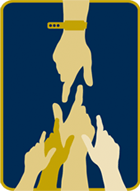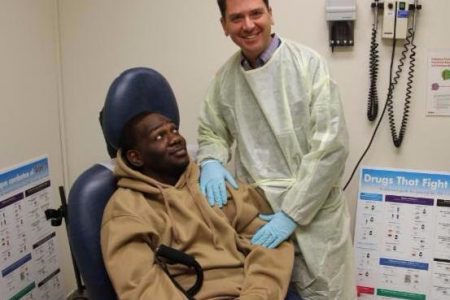“Every day there are nearly 100 people working to guarantee that everything goes the right way,” Dr. Andrea Lisco, of the National Institute of Allergy and Infectious Diseases, reminds his patient, Clifford, to boost his morale.
As with many of the medical enigmas faced by the NIH, finding answers for 37-year-old Clifford, from Baton Rouge, LA, has been challenging. More than 10 years ago, a genetic mutation turned warts and a rash on Clifford’s hands and feet into squamous cell cancer, robbing Clifford of his ability to work. Even putting on clothes proved to be a challenge.
“It was hard for me to do anything,” he said. Worst of all, the cauliflower-textured appearance of his skin scares people, even though he is not contagious. “A lot of people didn’t want to be around me,” Clifford said, “even friends and family.”
Through the generosity of donors, Friends of Patients at the NIH has eased the stress and isolation of his disease by providing an apartment to him near the NIH Clinical Center during his treatment. “I couldn’t be at the NIH without this support,” Clifford says and nods in appreciation, adding, “It’s given me a welcomed chance to get out of the hospital and sleep so well.”
Although Clifford’s NIH physicians don’t yet know the cause nor exact nature of his genetic defect, the team of infectious disease specialists, oncologists and dermatologists explored a unique solution when Clifford couldn’t tolerate traditional therapies for skin cancer. He is the first patient to undergo a stem cell transplant for his condition. Known as a “first in human” protocol, this treatment promises new options for many more patients to follow.
Bandaged by blue gauze, Clifford’s fingers appear four times larger than their natural size, but that doesn’t stop him from proudly showing pictures on his cellphone of his young children. He remains close with them despite the separation during treatment.
Dr. Lisco says Clifford’s treatment appears to work and he optimistically anticipates the disease will fully recede. Clifford is encouraged by his prognosis, so much so that he is taking classes while in treatment and plans to go back to school to earn a degree in business management when he returns home.
Please consider making a gift this giving season to help patients, like Clifford, in potentially life-saving clinical trials. Your support can change lives!





